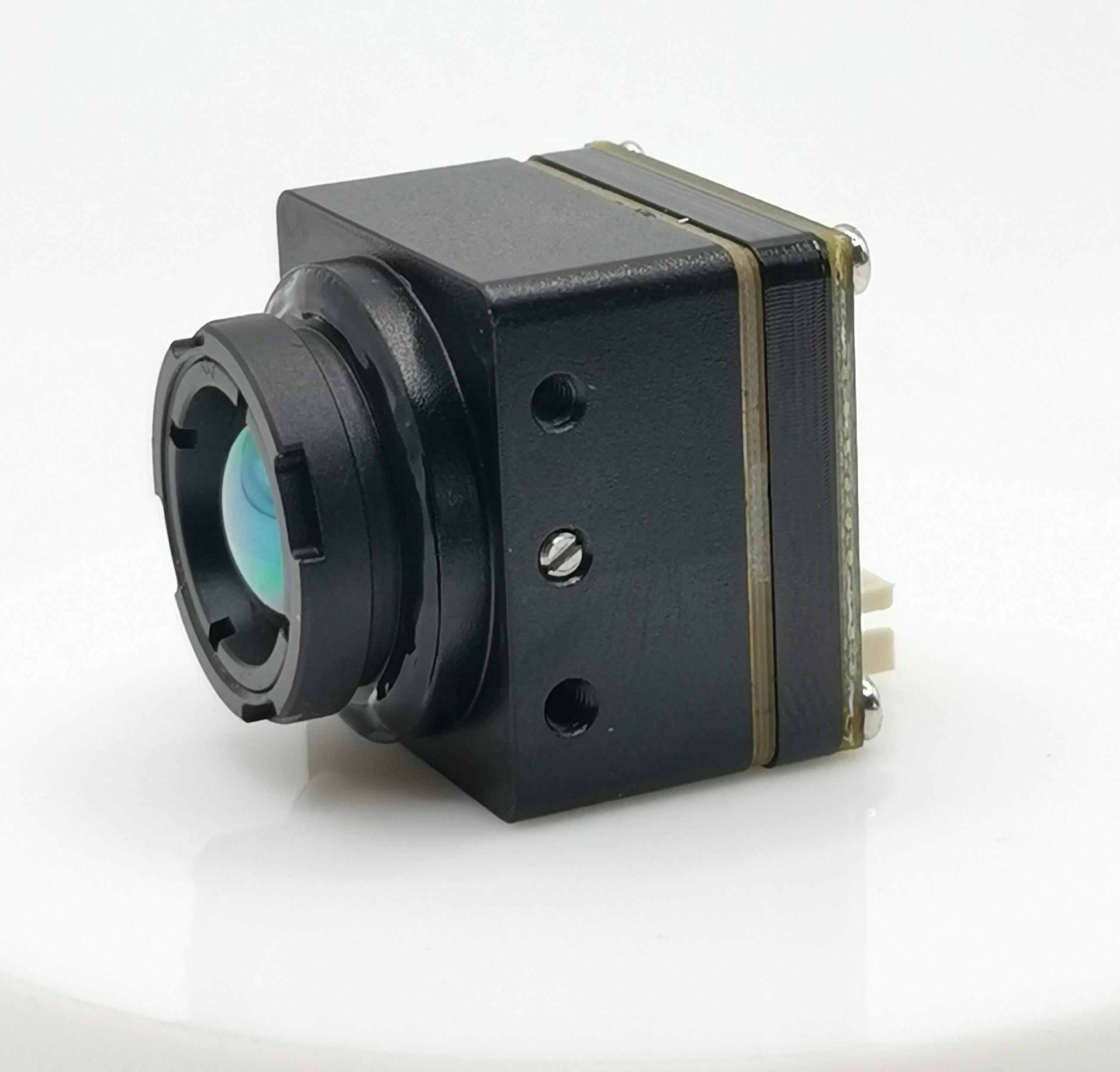Can Thermal Camera Equipped Drones Capture Animal Behavior Effectively?

Diving Into the World of Thermal Imaging
What is Thermal Imaging?
Thermal imaging is a technology that captures the heat emitted by objects and converts it into visible images. By detecting temperature differences, thermal cameras create a visual representation of the environment, making it possible to see in complete darkness or through obstacles such as smoke, fog, or foliage.
Understanding the Basics
The basic principle behind thermal imaging involves the conversion of infrared radiation emitted by objects into visible images. This technology allows us to observe and analyze heat patterns, making it invaluable for various applications, including wildlife research and monitoring.
How It's Changing Wildlife Observation
Thermal imaging has revolutionized wildlife observation by enabling researchers to study animals without disturbing their natural behavior. With thermal cameras, scientists can track animal movements, identify species, and study their behavior from a safe distance. This non-invasive approach provides valuable insights into animal habitats and interactions that were previously difficult to capture.
Why Use Drones for Wildlife Research?
Drones equipped with thermal cameras have become essential tools for wildlife research due to their numerous advantages over traditional methods.
The Advantages Over Traditional Methods
Using drones for wildlife research offers several advantages, including the ability to cover large areas efficiently and access hard-to-reach locations. Additionally, drones equipped with thermal cameras provide a bird's-eye view of animal populations and their habitats without causing disruption.
Examples of Successful Drone Wildlife Studies
Numerous successful wildlife studies have utilized drone-mounted thermal cameras to monitor animal behavior and population dynamics. From tracking endangered species to studying migration patterns, these studies have demonstrated the effectiveness of using drones equipped with thermal imaging technology in advancing wildlife research.
By leveraging this innovative approach, researchers are gaining unprecedented insights into animal behavior while minimizing disturbances in their natural habitats.
The Magic Behind FPV Thermal Cameras
Exploring FPV Thermal Camera Technology
First Person View (FPV) thermal cameras are a game-changer in wildlife monitoring, offering unique capabilities that enhance the study of animal behavior and habitats. These advanced cameras provide real-time thermal imaging, allowing researchers to observe animals without direct contact.
The Role of FPV in Wildlife Monitoring
FPV thermal cameras play a crucial role in wildlife monitoring by enabling researchers to remotely capture animal thermal camera photos using drones. This technology allows for non-invasive observation of animal behavior, providing valuable insights into their movements and interactions within their natural environment.
iSun Analog FPV Thermal Camera: A Case Study
The iSun analog FPV thermal camera exemplifies the cutting-edge technology used in wildlife research. With its high-resolution imaging and real-time streaming capabilities, this camera has been instrumental in capturing animal thermal camera photos using drones for various ecological studies.
Transforming Animal Research with FPV Thermal Cameras
FPV thermal cameras have revolutionized animal research by offering unprecedented access to wildlife behavior and habitats. These innovative tools enable researchers to capture animal thermal camera photos using drones with remarkable clarity and precision, shedding light on previously inaccessible aspects of animal ecology.
Real-World Applications and Success Stories
The application of FPV thermal cameras equipped on drones has yielded remarkable success stories in wildlife research. From tracking elusive species to studying nocturnal behaviors, these cameras have provided invaluable data for conservation efforts and ecological studies. Researchers have harnessed the power of iSun analog FPV thermal camera to document intricate animal behaviors, contributing to a deeper understanding of ecosystems and biodiversity.
Capturing Animal Behavior with Drones: Insights and Challenges
As researchers delve into the captivating realm of capturing animal thermal camera photos using drones equipped with FPV thermal cameras, they encounter a meticulous process that unveils profound insights while navigating through inherent challenges.
The Process of Capturing Animal Thermal Camera Photos Using Drones
Planning and Execution
The process of capturing animal thermal camera photos using drones entails meticulous planning and strategic execution. Researchers meticulously outline the study area, considering the targeted animal species' habitats and behavioral patterns. By strategically deploying drones equipped with FPV thermal cameras, researchers can efficiently cover expansive areas, enabling comprehensive wildlife monitoring and data collection. The precise coordination of flight paths and imaging parameters is crucial to ensure optimal coverage and data accuracy.
Interpreting the Data
Upon capturing animal thermal camera photos using drones, researchers are tasked with interpreting the wealth of thermal imagery obtained. Advanced image processing techniques are employed to analyze temperature differentials, identifying animal presence, movements, and interactions within their natural habitat. This data interpretation phase is pivotal in extracting meaningful insights into animal behavior, population dynamics, and ecological relationships.
Challenges and How to Overcome Them
Dealing with Environmental Factors
Capturing animal thermal camera photos using drones presents inherent challenges related to environmental factors such as weather conditions, terrain complexities, and vegetation density. Adverse weather conditions like strong winds or heavy rainfall can impede drone flights and affect image quality. Moreover, dense foliage may obstruct thermal imaging, posing challenges in obtaining clear visuals of animals within their habitats. To overcome these challenges, researchers employ adaptive flight strategies tailored to varying environmental conditions while leveraging advanced image enhancement algorithms to mitigate visual obstructions caused by dense vegetation.
Ethical Considerations in Wildlife Monitoring
Ethical considerations play a pivotal role in utilizing drones for capturing animal thermal camera photos during wildlife monitoring endeavors. Respecting wildlife welfare and minimizing disturbances are paramount priorities in this pursuit. Researchers adhere to established ethical guidelines by maintaining safe distances from animals during drone operations to avoid causing undue stress or disruption to their natural behaviors. Additionally, measures are implemented to ensure minimal intrusion into sensitive ecosystems while maximizing the benefits of non-invasive wildlife research.
The Future of Wildlife Research with Thermal Imaging
Emerging Trends and Technologies
As technology continues to advance, the future of wildlife research with thermal imaging holds promising innovations that will further revolutionize ecological studies.
Innovations on the Horizon
The ongoing development of lightweight and more powerful thermal cameras is a significant innovation on the horizon. These advancements will enhance the capabilities of drones equipped with FPV thermal cameras for capturing animal thermal camera photos, allowing for higher resolution imagery and improved detection of wildlife in various environmental conditions.
Furthermore, advancements in drone autonomy and navigation systems are poised to streamline data collection processes. Autonomous drones integrated with advanced obstacle avoidance and flight planning algorithms will enable more efficient coverage of vast terrains, facilitating comprehensive wildlife monitoring and research.
Integrating AI for Better Data Analysis
The integration of artificial intelligence (AI) into thermal imaging data analysis is a transformative trend in wildlife research. AI-powered algorithms can process large volumes of thermal imagery captured by drones, enabling automated species identification, behavior pattern recognition, and population estimation. This integration not only expedites data analysis but also enhances the accuracy and depth of insights derived from animal thermal camera photos using drones equipped with FPV thermal cameras.
The Impact on Conservation Efforts
The evolving landscape of wildlife research with thermal imaging technology has profound implications for conservation efforts worldwide.
Enhancing Species Protection
By leveraging advanced thermal imaging technologies, conservationists can gain a deeper understanding of animal behaviors and habitat dynamics. This insight enables targeted conservation strategies aimed at protecting vulnerable species and preserving critical ecosystems. The use of iSun analog FPV thermal camera-equipped drones to capture animal thermal camera photos contributes to comprehensive species protection efforts by providing valuable data for informed decision-making and proactive conservation measures.
Shaping Policies and Public Awareness
The widespread adoption of thermal imaging in wildlife research has the potential to shape policies and public awareness regarding environmental conservation. The compelling visual evidence obtained through FPV Thermal Camera-equipped drones capturing animal behavior serves as a powerful tool for raising public awareness about biodiversity preservation. Additionally, the scientific rigor facilitated by these technologies informs policy formulation, leading to more effective regulations aimed at safeguarding natural habitats and wildlife populations.
See Also
Enhancing Field Equipment Applications with Thermal Imaging Cameras on Parrot Drones
Progress in Small Thermal Camera Thermal Imaging Technology for Drones
Comparing Wildlife Monitoring with Drone Thermal Camera and FPV Thermal Camera
Achieving Mastery in Surveillance and Reconnaissance with Thermal Imaging Cameras on Drones
Optimizing Aerial Surveillance using Thermal Imaging Cameras on Drones
Contact Us: Ms. Coco Huang
E-mail: sales@iasun.cn
WhatsApp/Wechat: +86 13510421923

